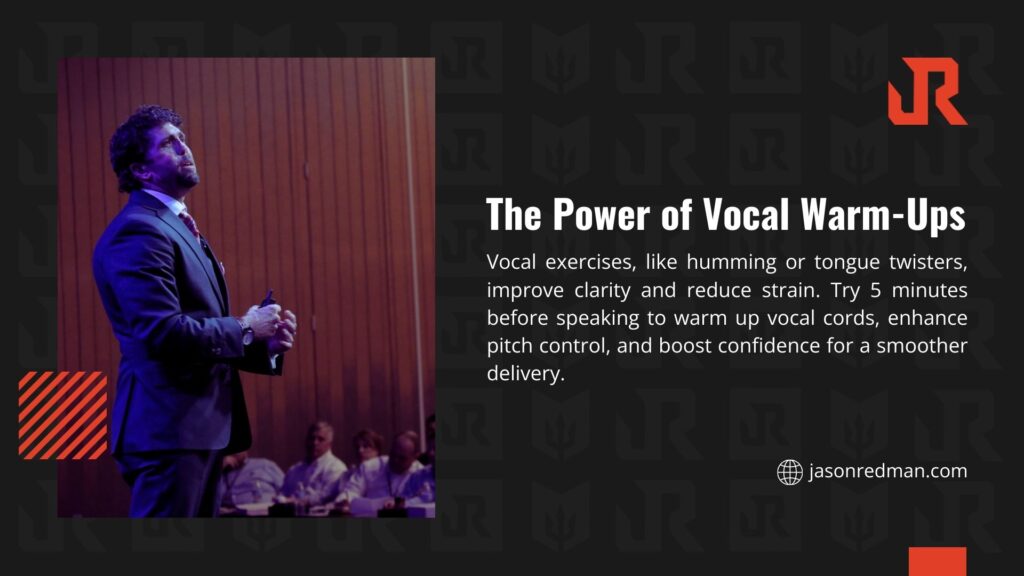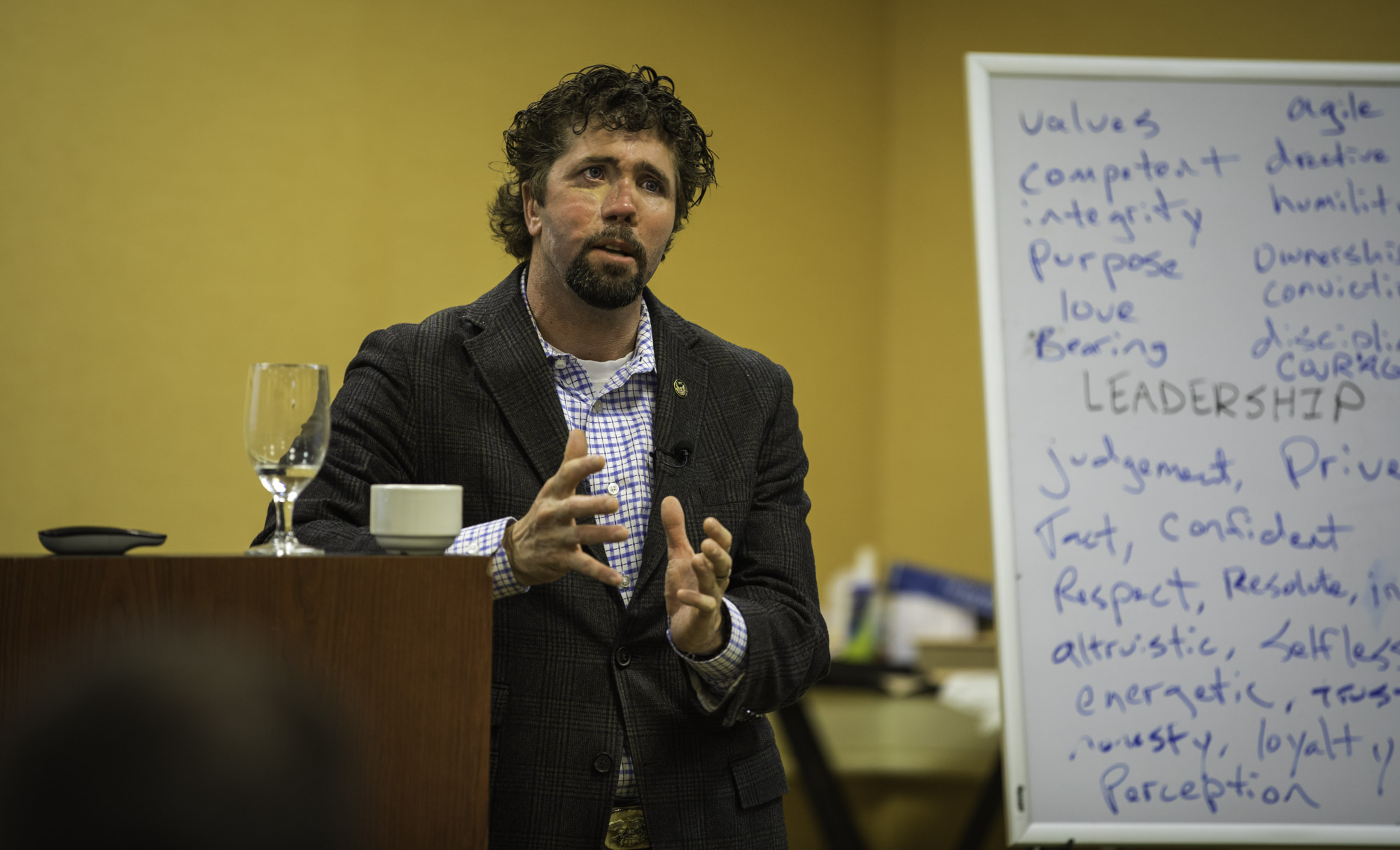I was sitting in a corporate boardroom last month, watching a brilliant engineer completely fall apart during what should have been a career-defining presentation. This guy had developed technology that could revolutionize his industry, but he was so paralyzed by his fear of public speaking that his groundbreaking ideas sounded like mumbled apologetic suggestions.
After the meeting, the CEO pulled me aside and said, “Jason, we’ve got the smartest people in the world working here, but half of them can’t communicate their way out of a paper bag. What do we do?”
That conversation reminded me why I’m so passionate about sharing real public speaking tips, not the feel-good fluff you’ll find in most communications courses, but tactical strategies that work under pressure. Because today, your ability to communicate effectively is critical.
Mindset Over Method
Most public speaking tips focus on technique, where to put your hands, how to make eye contact, and what to do with nervous energy. That’s backwards. Technique without the right mindset is just wrong. It might look better, but it won’t perform when you need it most.
Stop thinking of public speaking as performance and start thinking of it as leadership. You’re not up there to entertain or impress anyone. You’re there to serve your audience by delivering valuable intelligence they need to succeed.
When I was leading assault teams in Iraq, my job wasn’t to be the most popular guy in the unit. My job was to get everyone home alive by communicating critical information clearly and decisively. The same principle applies to every presentation you’ll ever give.
Your audience doesn’t need you to be perfect. They need you to be prepared, authentic, and focused on their success.
Public Speaking Tips for Pre-Mission Preparation
Let me give you some tips.
- Intelligence Gathering
Before any mission, you study the terrain, the enemy, and the objective. Public speaking requires the same reconnaissance.
- Who’s in your audience?
- What keeps them up at night?
- What problems are they trying to solve?
The more you understand their world, the more you can tailor your message to hit home. When you know your audience better than they know themselves, confidence follows naturally.
- Content Architecture
Your presentation needs a clear mission structure. Here’s the framework I use for every speech:
- Opening Strike: Grab attention in the first 30 seconds with a story, statistic, or provocative question
- Situation Report: Clearly state the problem or opportunity you’re addressing
- Intelligence Briefing: Present 3-5 key points with supporting evidence
- Action Orders: Tell them exactly what to do with this information
- Rally Point: End with a memorable call to action
- Rehearsal Protocol
This is where most people fail. They think reading through their notes a couple of times counts as preparation. That’s amateur hour. You need to practice your presentation out loud, on your feet, at full volume, multiple times.
Record yourself. Watch it back. You’ll see habits you didn’t know you had and can correct them before they become problems on stage.

Tactical Public Speaking Tips for Delivery
When we speak publicly, we need to deliver our message in a certain way.
- Command Presence
Your body language starts communicating before you say a word. Stand like you belong there. Shoulders back, feet shoulder-width apart, weight evenly distributed. Your physiology affects your psychology.
Make eye contact like you’re connecting with individuals, not scanning a crowd. Pick one person, deliver a complete thought, then move to another person. This creates the impression that you’re having personal conversations, even in a large audience.
- Voice as a Weapon System
Your voice is your primary communication tool. Train it accordingly. Project from your diaphragm, not your throat. Vary your pace to emphasize key points, slow down for important information, speed up to build energy.
Eliminate filler words like “um,” “uh,” and “you know.” These verbal crutches undermine your authority. If you need a moment to think, just pause. Silence is more powerful than stammering.
- The Power of Strategic Pausing
One of the most effective public speaking tips I can give you is to learn to use silence as a tool.
After making an important point, pause. Let it sink in. Don’t rush to fill the space with more words. That pause gives your audience time to process and emphasizes the significance of what you just said.
How to Improve Public Speaking Under Pressure
That nervous energy you feel before speaking? That’s your rocket fuel. The same adrenaline that helped me stay sharp in combat can help you deliver a more dynamic presentation. The key is channeling it.
You can try this breathing technique to call yourself down. Four counts in through your nose, hold for four counts, out through your mouth for six counts. Do this three times before you speak. It activates your parasympathetic nervous system and brings your heart rate down to operational levels.
Turning Mistakes into Victories
You’re going to mess up. Everyone does. The difference between amateurs and professionals is how they handle mistakes. Don’t apologize profusely or draw attention to minor errors. Most of the time, your audience won’t even notice.
If you make a significant mistake, acknowledge it briefly and move on. “Let me correct that…” or “Actually, the accurate number is…” then keep rolling. Dwelling on mistakes kills momentum and undermines confidence.
Dealing with Hostile Audiences
Sometimes you’ll face resistance. Maybe they disagree with your message, or they’re forced to be there, or they’re just having a bad day. Don’t take it personally. Your job is to deliver value regardless of their initial attitude.
Stay focused on your mission. What motivates you to share this message? Keep that bigger purpose in mind when individual reactions try to throw you off course.
| Challenge | Tactical Response |
| Blank mind | Return to your outline |
| Hostile question | Acknowledge, redirect |
| Technical failure | Continue without slides |
| Time pressure | Focus on the core message |
Advanced Public Speaking Tips for Maximum Impact
Aside from the general tips, here are some more advanced tips that will help you when speaking.
Storytelling
Facts tell, but stories sell. Every great speaker understands this principle. Your personal experiences and case studies are your most powerful weapons for creating emotional connection and making abstract concepts concrete.
My approach to leadership and change always starts with a story because narrative bypasses analytical defenses and speaks directly to the heart. When you share your struggles and victories, you give your audience permission to believe change is possible for them too.
Building Audience Engagement
Don’t just talk to your audience, but engage them. Ask rhetorical questions that get them thinking. Use polls or interactive exercises when appropriate. Get them physically involved by having them raise their hands or turn to a neighbor.
The more senses you engage, the more memorable your message becomes. People remember 10% of what they hear, 20% of what they see, but 90% of what they do.
Every great presentation has a moment the audience will never forget. It might be a powerful story, a surprising statistic, a thought-provoking question, or a demonstration. Plan these moments deliberately. They’re what people will talk about long after your presentation ends.
How to Improve Public Speaking Through Systematic Development
When you think about how to improve public speaking, you need to join groups where you’ll be challenged. Toastmasters, professional associations, and volunteer opportunities. The more you expose yourself to speaking situations, the more comfortable you become.
Start small and build systematically. Speak up in meetings. Volunteer for five-minute presentations. Work your way up to longer formats. Each successful experience builds confidence for the next challenge.
Feedback Loops & Study Speakers
Seek out honest feedback from people who will tell you the truth. Most audiences are polite to your face but honest in their evaluations. Ask for specific feedback:
- “What one thing could I do differently to make this more impactful?”
Study speakers who command attention. Notice their pacing, their gestures, their storytelling techniques. Read transcripts of great speeches. Watch TED talks with the sound off to focus on body language, then with only audio to focus on vocal delivery.

Learn How To Speak Effectively
These public speaking tips will only transform your communication abilities if you apply them consistently. Reading about swimming won’t keep you from drowning. You have to get in the water and practice.
Your fear of public speaking has kept you on the sidelines long enough. Every opportunity you’ve declined because of anxiety is a leadership moment you’ve surrendered. Every time you’ve stayed silent when you had something valuable to contribute, you’ve done a disservice to yourself and your audience.
The skills you need to become an exceptional public speaking professional are learnable. They require the same commitment to excellence you’d bring to any other critical career competency.
Stop waiting for someday. Start implementing these strategies today. Begin with your next meeting, your next presentation, your next opportunity to share your expertise.
Work with me to develop the commanding presence and tactical communication skills that separate elite leaders from everyone else. Your audience is waiting for what you have to offer. Let’s make sure you’re prepared to deliver it with impact.


